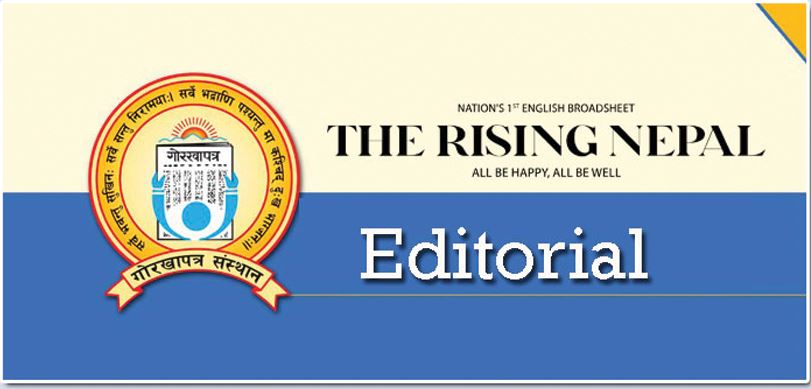- Wednesday, 30 July 2025
Sound Monetary Regime
Next month, Nepal Rastra Bank (NRB) is scheduled to unveil a monetary policy that is significant for the overall growth of the economic sector. The government has already presented the budget for the fiscal year 2025/26 in the federal parliament. The continuous obstruction in the House has hindered the smooth deliberation over the budget. Now, the NRB needs to prove its mettle to bring the monetary policy that gives impetus to the economy struggling to take shape. More importantly, monetary policy must align with the strategy and goals of the budget. Monetary policy has an important role in stabilising the economy through a series of measures. It should be geared to maintain price stability through the adjustment of the money supply and interest rates. The high or low interest rates have implications for growth, employment and infrastructure development.
NRB resorts to a contractionary and expansionary monetary policy to maintain inflation as per the stated objective. The contractor policy is applied if it is too high. It increases interest rates and reduces the money supply for this purpose. In case the inflation is very low, an expansionary policy is adopted through the reduction in interest rates and an increase in the money supply. According to NRB's macroeconomic and financial situation report made public Tuesday, the y-o-y consumer price inflation stood at 2.77 per cent in mid-May 2025 compared to 4.40 per cent a year ago. The decline in inflation in the first 10 months of the current fiscal year implies that the recovery of the national economy is on the right course.
When the interest rates are too low, both businesspeople and consumers are encouraged to borrow money from banks. Businesspeople invest money in business and construction, while consumers buy goods. This will indeed give a boost to the economy through job creation and revenue generation. However, there has been excess cash in Nepali banks at the moment, with a low interest rate. Still, there is no demand for credit, which is a dilemma for the economic sector. Now interest rates on bank deposits are around 4.45 per cent, which is the lowest since 2073 BS. The high liquidity risks lead to capital flight from the country. To deal with this situation, the monetary policy should focus on boosting the loan disbursement and fuelling demand in the market.
This situation has arisen due to the declining capacity of industries to take out loans. The industrialists and businessmen lamented that they are facing problems because of the loans they took at high interest rates in the past. This has dented their confidence, slowing down economic activities. So the monetary policy should boost the confidence of the business sector and prompt the banks to invest their capital in business and manufacturing, so that money is supplied to the market and new jobs are created. In order to address the fiscal trouble, the Finance Ministry and NRB should chalk out a shared vision and objectives. They must coordinate with each other to produce coherent policies that have positive impacts on the overall economy. The country needs sound monetary governance, which can be achieved through proper balance and coordination between the fiscal and monetary policies and their effective implementation.




-square-thumb.jpg)


-square-thumb.jpg)
-square-thumb.jpg)








